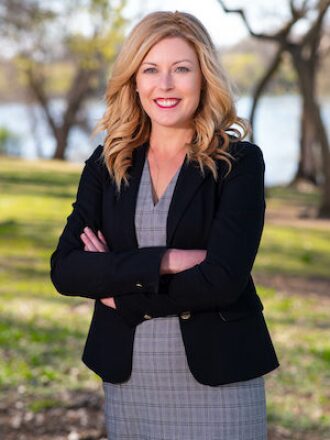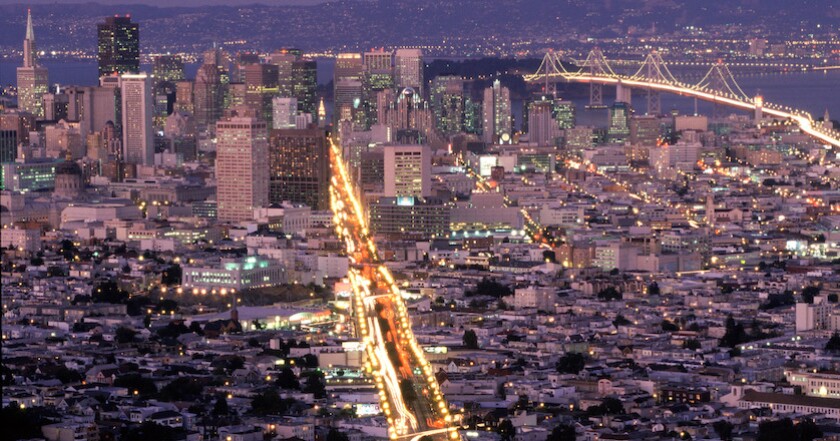“It’s now or never, if we want to limit global warming to 1.5C,” said report Co-Chair Jim Skea on its release. “Without immediate and deep emissions reductions across all sectors, it will be impossible.”
Although the rate of growth of greenhouse gas emissions has slowed, atmospheric concentrations of CO2 have increased steadily for more than half a century. Emissions of all groups of greenhouse gases resulting from human activity have also gone up. Efficiency has helped reduce CO2 emissions from fossil fuel use, but less than emissions have increased as a result of “rising global activity levels in industry, energy supply, transport, agriculture and buildings,” the authors say.
The current administration is committed to a climate agenda but is up against more than entrenched resistance from Republicans. According to a recent Pew Research Center report, dealing with climate change was nearly at the bottom of a list of 19 items that Americans felt should be priorities for the president and Congress.
In the midst of policy turbulence, local leaders are feeling the real-world effects of warming, from wildfires, hurricanes, tornadoes and floods to record heat. The nonprofit Climate Mayors, a bipartisan network of nearly 500 mayors from 48 states, is committed to peer-to-peer cooperation in developing climate protection strategies and keeping pressure on the federal government to do its part.
Climate Mayors recently welcomed a new executive director, Kate Wright. Before coming to Climate Mayors, Wright served as CEO of the Local Government Commission (renamed CivicWell in 2022), leading initiatives that encompassed a wide range of issues around sustainability and climate resilience.
Wright talked to Governing about her new job and the challenges and opportunities mayors face at this time. The interview has been edited for length and clarity.

(NOAA Global Monitoring Laboratory)
Kate Wright: I worked on these issues for 15 years at my previous organization, supporting cities and counties primarily in California. This move was about focusing on providing support for mayors outside of California. I see the power of local leaders as those closest to the problems, and uniquely positioned to innovate around solutions that can be scaled.
We are at a point where we need to be treating this like the crisis it is. To get to the speed and scale we need to address climate change, we need to support mayors in environments where there is less regulatory or funding support, that are facing more challenges and more of an uphill battle.
Governing: What are some of your first priorities?
Kate Wright: Strengthening the bonds between mayors and communities of all shapes and sizes. The last couple of years have been really difficult for everybody, and mayors have been in a position of decision-making authority around some really thorny and complex issues.
Having a peer-to-peer network to share best practices and to work together to advance equitable climate solutions is going to be critical. When the Trump administration pulled out of the Paris Accords, mayors stepped up and said, “We’re going to do this at the local level collectively,” to continue to meet the call that the crisis demanded.
We want to make sure that we’re engaging collectively as a mayor’s group with the White House and federal leaders to ensure that local leaders are heard and brought into the development and execution of national policy.
Governing: What kinds of challenges lie ahead?
Kate Wright: Mayors are grappling with a number of crises. Beyond climate change, they’re at the forefront of pandemic recovery, racial reckoning, pervasive homelessness and growing inequality.
It’s up to us to help mayors find multi-benefit solutions that can support environmental, economic and equity needs. The good news is that there are unprecedented levels of federal funds now available.
Our goal is to work with federal agencies to ensure that those dollars can support multi-benefit projects that can help mayors, and the communities they serve, address the multitude of issues that they’re facing.
Governing: What are some important uses for federal dollars?
Kate Wright: The need for infrastructure investment is huge. We have a growing need for building energy efficiency and decarbonizing buildings in terms of reducing energy bills as well as the public health benefits.
Climate Mayors launched an EV purchasing collaborative in 2018 that now includes over 250 cities, counties, and other authorities committed to purchasing thousands of electric vehicles by pooling together their purchasing power. Our work around electrifying vehicles and moving to more bikeable, walkable communities is going to be a big part of the strategy.
We are already seeing climate impacts in communities, and mayors are working to face them, looking at urban greening or cooling strategies to address extreme heat. One of our climate mayors, Kate Gallego, has committed to making Phoenix the most sustainable desert city in the United States. They’ve launched the first publicly funded office of heat response and mitigation and a successful cool pavement pilot.
We have proven technology and proven approaches, and we’re working with the administration to share lessons learned from previous stimulus packages and infrastructure investments to make sure that we’re mobilizing funding in a way that’s truly transformative.
Governing: There’s not strong bipartisan commitment to climate at the federal level, and it’s not always present at the state level. Why are mayors different?
Kate Wright: Mayors are so much closer to their constituents. They are beholden to their community members’ interests across the political spectrum, dealing with everything from pothole issues to crises like climate change and pandemic response. At the local level, we don’t see the same level of split because we’re rolling up our sleeves and working towards community solutions.
Whether it’s planting trees to improve air quality or adding bike lanes or expanding renewable energy and electric vehicle infrastructure to reduce energy costs, a lot of strategies have support across party lines. Everybody wants to save on fuel costs. Everyone wants to save on their energy bills.
Governing: Is it fair to say that local leaders see climate differently because it’s not an abstract concept for them? Many are dealing with big impacts right now.
Kate Wright: Absolutely. Mayors are on the front lines of the climate crisis. They’re on the ground dealing with extreme storms, heat waves, drought, wildfires — including wildfires from surrounding communities.
We’re addressing very specific impacts like a heat wave or an extreme storm, and mayors are the front lines of the need for reaction and response. They’re well positioned to identify solutions that fit the community context and to be creative about working with local business owners or local stakeholders to develop innovative solutions.
Governing: Are there relationships between climate and the other problems mayors face at this time?
I do think there are some connections across all these issues, and the extremity of one crisis exacerbates the others. The pandemic fundamentally altered our lives and illustrated the danger of failing to prepare for a crisis of this scope and scale.

(Dan Hood/Climate Mayors)
Another lesson from the pandemic is that when we truly acknowledge the urgency of a crisis, we are able to eliminate barriers to adopting new behaviors and to deploy solutions at a scale and speed that would have previously been unimaginable.
Governing: The economy is a big concern right now. Do mayors see economic benefits in an energy transition?
Kate Wright: Mayors are aware of the benefits of a transition to a cleaner economy. We need to continue to highlight the data and research that shows these benefits, whether in terms of cost savings or public health. We’ve seen plenty of evidence on both sides.
It always comes to a question of who gets the benefits, and over what period of time. It’s great that we have funding at this point; upfront costs can be a barrier, even if the benefits are going to be realized over time.
We are supportive of the Justice40 initiative and ensuring that benefits from these federal investments go to disadvantaged and underserved communities, making sure that solutions are accessible to all types of communities and all types of residents.
Governing: How does uneven commitment to climate at state or federal levels affect demand for progress at the local level?
Kate Wright: Mayors are the ones that are held responsible for addressing these issues, whether it’s a storm or an extreme weather event. They’re getting stopped at the grocery store, or walking down the street, in a way that leaders at other levels are more immune to. There’s an urgency to act and a call in these communities to act.
Climate Mayors stepped up in the aftermath of the federal government pulling out of the Paris Agreement. Last year, a bipartisan group of mayors representing more than 54 million Americans pledged to halve emissions by 2030 and achieve net zero by 2050.
We do need federal support, but mayors are going to be moving forward on this issue, and continuing to lead, no matter what’s happening at the federal level.
Governing: Any last thoughts?
Kate Wright: I would ask your readers to think about the complexity of leading in the local space and how challenging it can be to balance the climate crisis with all the other crises.
We need to hold our mayors responsible for action and for meeting the goals that they’re committing to, but we need to provide an environment that gives them the capacity to step forward and lead — to show up at council meetings, to support climate resolutions, to work with local business owners and local community-based organizations.
We’ve seen increasing advocacy in the climate space, which is great, but it’s going to take all sectors working together on this issue.













